In zoology, deep-sea gigantism, also known as abyssal gigantism, is the tendency for species of crustaceans, invertebrates and other deep-sea-dwelling animals to display a larger size than their shallow-water counterparts. Examples of this phenomenon include the giant isopod, the Japanese spider crab, the king of herrings (an oarfish of up to 11 m), the Seven-arm Octopus, and a number of squid species: the Colossal Squid (up to 14 m in length), the giant squid (up to 13 m), the Robust Clubhook Squid, the Dana Octopus Squid, Galiteuthis phyllura, Kondakovia longimana, and the bigfin squids. It is not known whether this effect comes about as a result of adaptation for scarcer food resources (therefore delaying sexual maturity and resulting in greater size), greater pressure, or for other reasons.
1. Bathynomus Giganteus (Giant Isopod)
Maturing to a length between 19 and 37 centimetres (7.5 and 15 in), and maximally reaching a weight of approximately 1.7 kilograms (3.7 lb), giant isopods are a good example of deep-sea gigantism; most other isopods range in size from 1 to 5 centimetres (0.39 to 2.0 in). The isopods don't have much to do. They do not swim around like others in fish tanks. Most often they look as if to be sleeping. Oh, what a life!

2. Mesonychoteuthis Hamiltoni (Colossal Squid)
On February 22, 2007, it was announced by authorities in New Zealand that the largest known Colossal Squid had been captured. The specimen weighed 495 kg (1,091 lb) and was initially estimated to measure 10 m (33 ft) in total length.
Two Thai fishermen show off a 646-pound giant catfish they caught in the Mekong River in the Chiang Khong district of Chiang Rai Province in northern Thailand in mid-May 2005. The fish reportedly scared some tourists.
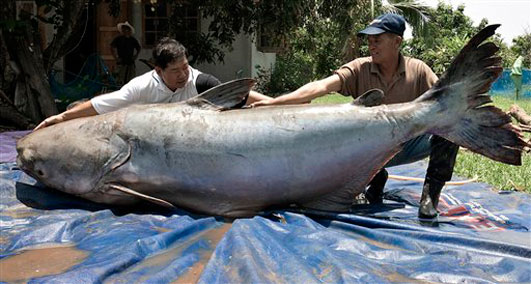
A Cambodian fisherman holds a giant stingray fish on the Mekong River near the Cambodian/Vietnam border on Dec. 10, 2002. The giant stingray may be the largest freshwater fish species in the world.
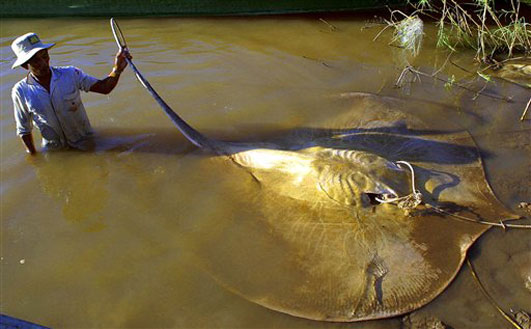
Two giant ''echizen'' jellyfish are seen swimming in the Sea of Japan five meters below the surface off the Town of Echizen, Fukui Prefecture. Local fishermen blame the creatures for damaging their fishing nets.
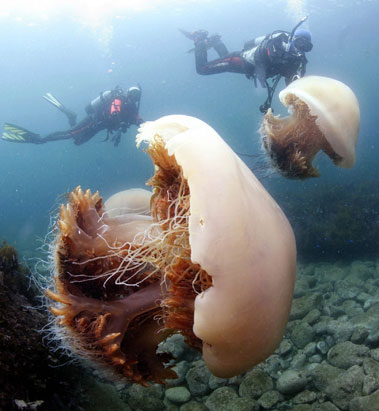
The Giant Pacific Octopus is considered very intelligent for an invertebrate. The octopus is one of the few creatures known to prey on sharks.
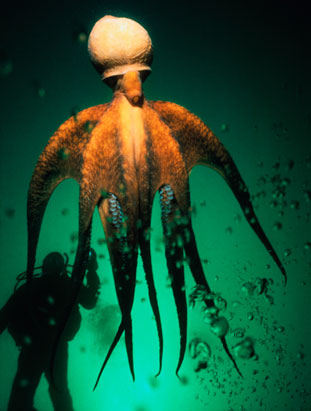
Antarctic explorers hold a giant Macroptychaster sea star (starfish). The discovery of giant-sized specimens have surprised researchers during a survey of New Zealand's Antarctic seas.
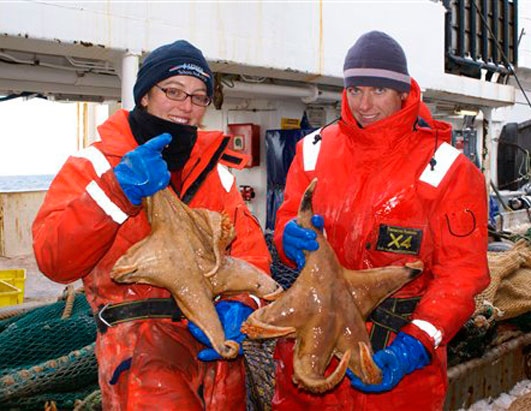
The giant Japanese Spider crab is the world's largest marine crab with a leg span approaching four meters and can weigh up to 20 kgs. The crab is found off Japan's coast, where it feeds on dead animals and shellfish. It is believed to live up to 100 years.
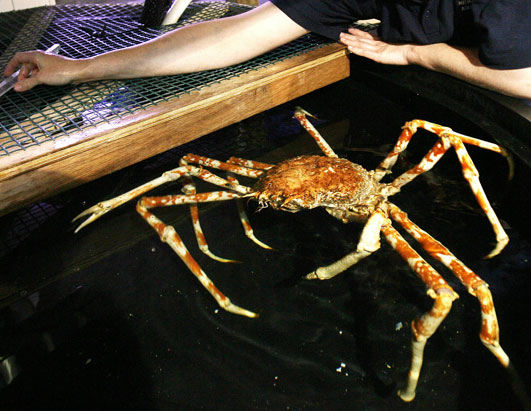

Comment